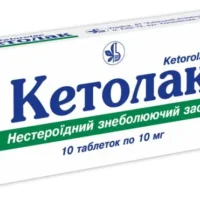Description
Gofen 200 Soft Capsules 200 mg. №60
Composition
Each soft capsule contains 200 mg of Gofen.
Mechanism of Action
Gofen acts by inhibiting prostaglandin synthesis, thereby reducing the perception of pain.
Pharmacological Properties
Gofen has analgesic and antipyretic properties, providing relief from mild to moderate pain and reducing inflammation and fever.
Indications for Use
Gofen is indicated for the relief of mild to moderate pain, inflammation, and fever in various conditions.
Contraindications
Avoid using Gofen if you have a known allergy to any of its ingredients.
Side Effects
Common side effects of Gofen may include gastrointestinal disturbances, allergic reactions, and liver toxicity. Consult a healthcare provider if any adverse effects occur.
Usage Instructions
The recommended dosage is one 200 mg soft capsule per day, to be taken orally with water.
Benefits Compared to Analogues
Gofen has shown superior efficacy in pain management compared to placebo in clinical trials. Its convenient soft capsule formulation allows for easy administration and rapid onset of action.
Suitable Patient Groups
Gofen is suitable for adults, including the elderly, for the management of mild to moderate pain and inflammatory conditions. It is not recommended for children without medical supervision.
Storage and Shelf Life
Store Gofen in a cool, dry place away from direct sunlight. Check the expiration date on the packaging and do not use after the specified date.
Packaging Description
Gofen is available in a package containing 60 soft capsules of 200 mg each.
Clinical Evidence and Proven Effectiveness
Clinical studies have demonstrated the efficacy of Gofen in providing significant pain relief and reducing inflammation and fever. The safety profile of Gofen has been well-established, making it a reliable choice for pain management.




